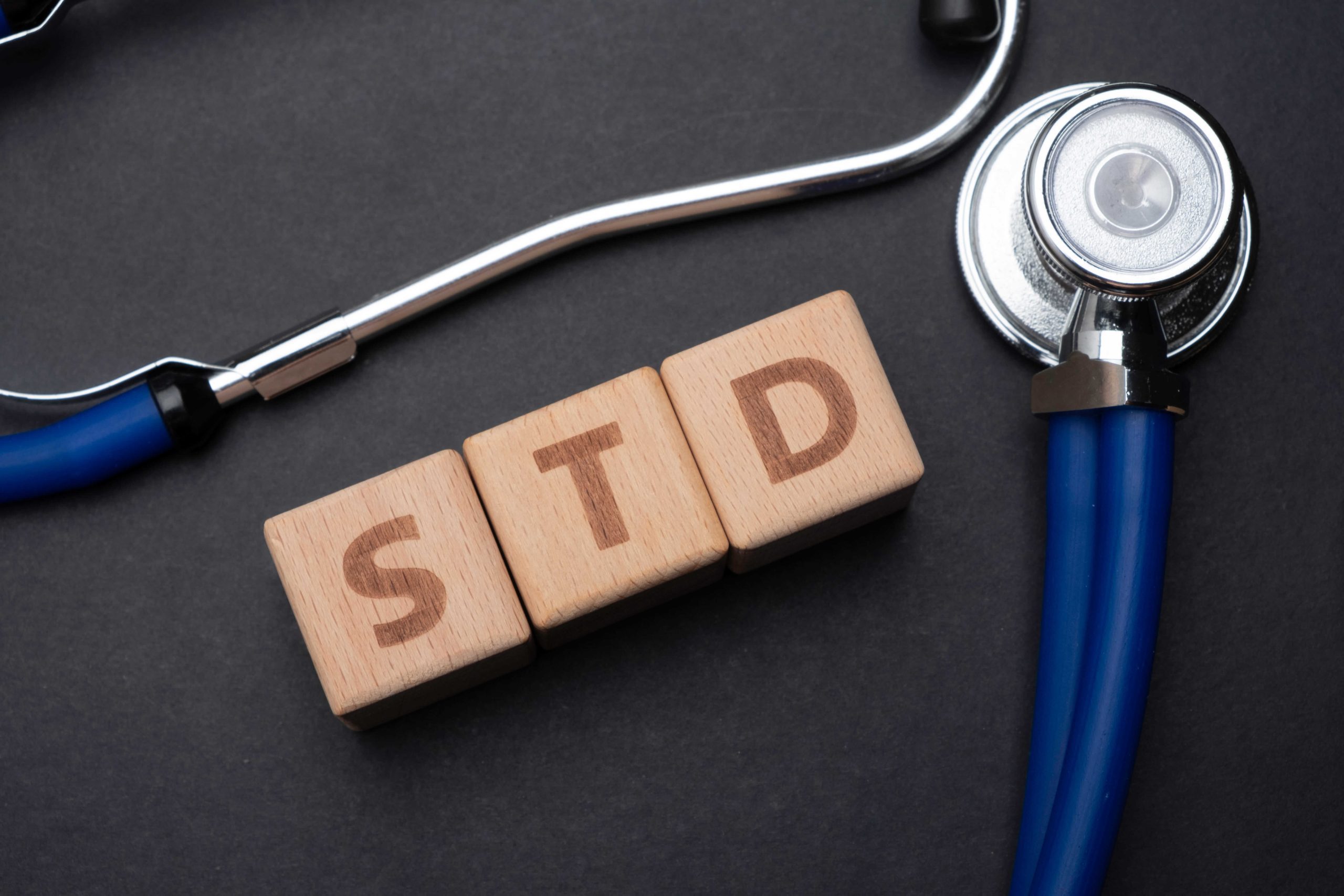SEXUALLY TRANSMITTED DISEASES
SEXUALLY TRANSMITTED DISEASES: 101

WHAT ARE STDs?
Sexually transmitted diseases, also known as ‘STDs’ and ‘STIs’, are infections that are spread through sexual contact, from anal sex to vaginal intercourse – and even oral sex. There are more than 20 STDs found in the US, each with different symptoms, severity levels, and treatment options, but the approach remains the same: There is help available, treatment should be judgment-free, and you’re not alone.
In the United States, the most common STD is HPV, or ‘Human Papillomavirus’. Affecting both men and women, 14 million Americans contract HPV each year, with some studies showing that up to 75% of adults will be infected at some point in their lives. It’s a worrying statistic for many, but one that can be avoided – or at least minimized – by using protection in the bedroom.
SYMPTOMS OF STDs
It’s important to remember that your symptoms will be as unique as you, and that you may not have any symptoms at all. That said, there are a few key signs to look out for. Let’s walk through the most common infections:
HPV:
Most HPV infections don’t cause any symptoms, which is why frequent sexual health screenings – even if you feel well – are recommended. However, genital warts can be a tell-tale sign that you’ve contracted HPV. If you begin to notice cauliflower-shaped bumps around your penis, vagina, or anus, it may be time to get checked.
CHLAMYDIA:
Like HPV, not everybody with chlamydia will experience symptoms, which is why it’s so easy for the infection to sneak around undetected. In women, those with chlamydia may notice unexpected bleeding, an unusual vaginal discharge, and pain when urinating, during sex, and generally day-to-day. In men, testicle pain, cloudy discharge, and pain when urinating all point to chlamydia.
GONORRHEA:
10% of men, and 50% of women with gonorrhea don’t experience any symptoms. That said, when they do arise, they’re often easy to spot. In men, painful testicles, a burning sensation when peeing, and a thick green/ yellow discharge signal a gonorrhea diagnosis. In women, the symptoms tend to mirror chlamydia; unexpected bleeding, increased vaginal discharge, and pain when urinating.
STD TREATMENTS
Well, that depends. There’s an ever-increasing list of STD treatments, whether that’s a one-pill cure or continuous medications to relieve symptoms. Depending on which STD you’re diagnosed with, what other medication you’re on, and your gender, you’ll be matched to the right treatment option for you.
WHY IS IT IMPORTANT TO TREAT STDs?
For many people, the driving force behind booking an STD test is simple: To ensure they’re not playing a role in the spread of any sexually transmitted infections, protecting their partner in the process. But there is another critical reason to test, diagnose, and treat infections early.
If left untreated, STDs have a nasty habit of making their way throughout your body, causing some potentially scary knock-on effects. There are many consequences, which can be avoided by refusing to push back your STD screening. After all, there’s no better time than today.
STD IN EYE SYMPTOMS
Surprisingly to many, STDs can also affect the eyes. It can be difficult to spot the difference between pink eye and STD-related eye infections, which is why it’s vital to seek the advice of a medical professional, rather than getting over-the-counter medication.
Chlamydia, gonorrhea, herpes, and syphilis can all wreak havoc in the eyes. While the symptoms may vary slightly, depending on which infection has made its way into the eye, you can expect to experience redness, blurry vision, swollen eyelids, tearing, or eye discharge. But don’t worry – provided you catch it early, your doctor will prevent your symptoms from worsening.
NEGATIVE STD TEST BUT STILL DISCHARGE
We understand. You’ve gone to the effort of getting tested and enjoyed the peace of mind of a negative result – only to continue experiencing the same symptoms. In some cases, getting tested too early after catching an STD will result in a false negative test, so we’d recommend booking a re-test. If it comes back negative for a second time, it’ll be time for your doctor to conduct more tests.
BURN WHEN PEE STD
It may sting, burn, and make you dread using the bathroom, but painful urination is one of the most common symptoms of an STD. Often found in those with chlamydia, gonorrhea, herpes, and trichomoniasis, we think of burning sensations as a sign to seek out an STD test. It could be a UTI, prostatitis, or kidney issues, but it’s better to be safe than sorry.

POSITIVE STD TEST RESULTS
For many people, receiving a positive STD test result is a moment of complete concern. Who did I catch it off? What if it’s not curable? Who do I tell? They’re all questions that are probably circling around in your mind. But the good news is, most STDs are curable, all STD symptoms can be relieved, and you can go on to live a perfectly normal life. Over half of Americans will catch an STD at some point in their life, so it’s vital not to let embarrassment get in the way of the right support.
It’s no secret that, for many people, their STD screening is often the task that falls to the bottom of their to-do list. But we’re waving goodbye to embarrassment, calling time on cold waiting rooms, and making your sexual health a priority. Don’t wait – catch it early.
